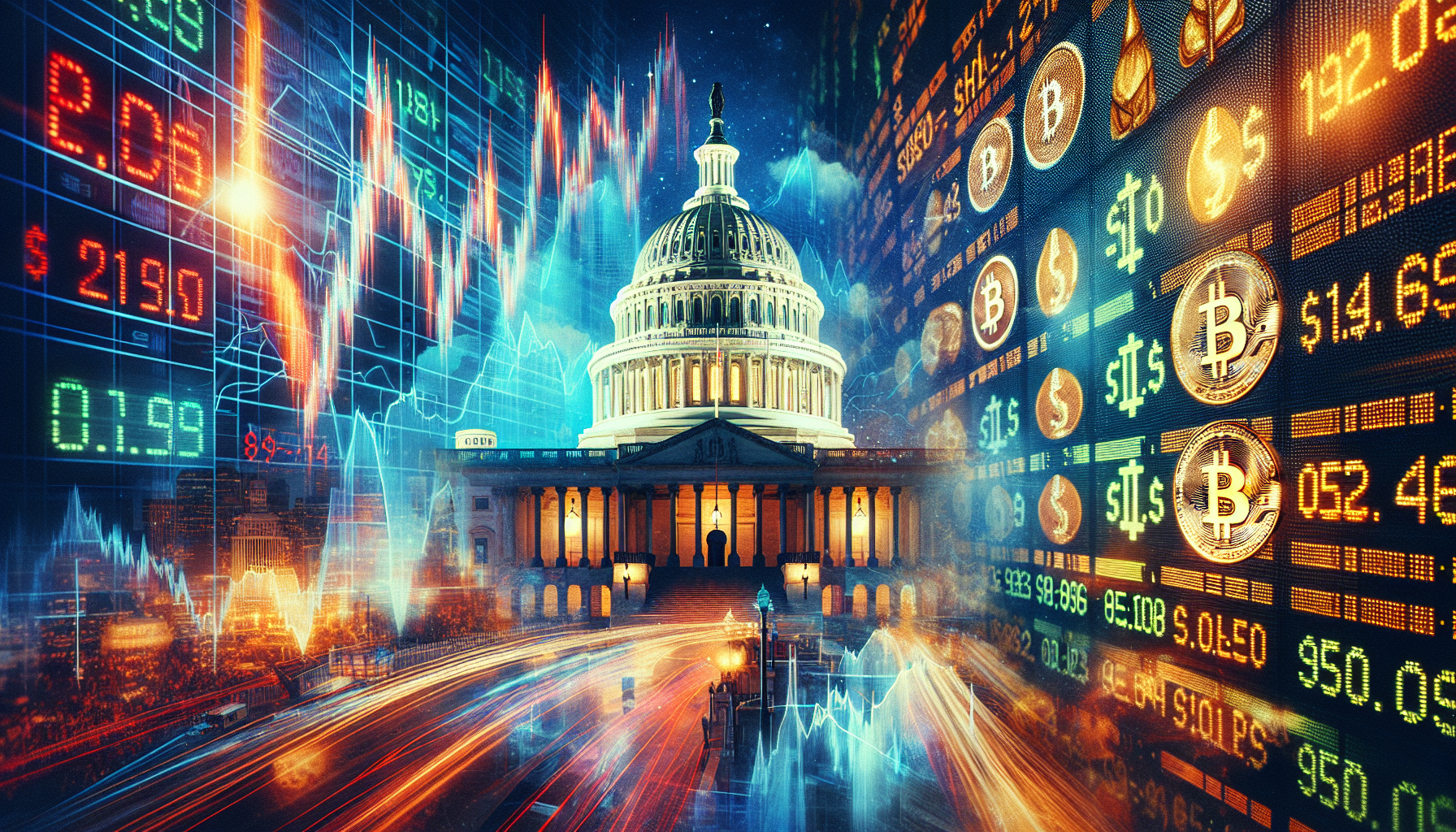
tl;dr
The U.S. stock market braces for a mixed opening amid geopolitical tensions, while Bitcoin and gold surge as safe-haven assets. Regulatory uncertainties, corporate deals, and OPEC+ decisions add complexity to the financial landscape.
The U.S. stock market is poised for a mixed opening as investors navigate a complex web of geopolitical tensions, technological breakthroughs, and corporate developments. On the eve of October 6, 2025, futures contracts for major indices like the S&P 500 and Nasdaq hinted at a positive start, despite lingering uncertainty over the federal government’s fiscal health. Meanwhile, alternative assets like Bitcoin and gold continued their ascent, reflecting shifting investor priorities in an era of economic unpredictability.
The government shutdown, now in its second week, remains a focal point for traders. While the S&P 500 and Dow Jones Industrial Average closed record highs on Friday, the threat of prolonged fiscal gridlock has kept market participants on edge. Futures data suggested cautious optimism, with the S&P 500 futures up 0.3% and Nasdaq futures surging 0.7%. However, the 10-year Treasury yield edged higher to 4.16%, signaling concerns about inflationary pressures and the cost of borrowing. Analysts note that while the shutdown has yet to trigger a significant market correction, prolonged negotiations could erode investor confidence, particularly if key services like federal contracts or consumer programs face disruptions.
In contrast to the stock market’s cautious tone, digital assets and commodities are defying traditional risk-off behavior. Bitcoin surged past $124,000, hitting a new all-time high amid a weakening U.S. dollar and ongoing debates over fiscal policy. The cryptocurrency’s rally underscores its growing role as a hedge against fiat currency volatility, particularly in environments where central bank policies are perceived as uncertain. Gold, too, reached an unprecedented $3,950 per ounce, with investors flocking to the metal as a safe-haven asset. “The market is pricing in a prolonged period of macroeconomic uncertainty,” said one strategist, noting that both Bitcoin and gold have outperformed traditional safe havens like Treasury bonds.
Energy markets also saw movement, as OPEC+ announced a modest 137,000-barrel-per-day production increase for November—a figure lower than some analysts had anticipated. Oil prices climbed to $62 per barrel, reflecting a delicate balance between supply constraints and demand expectations. The decision highlights the cartel’s cautious approach to stabilizing prices amid a global economic slowdown, but it also raises questions about whether the output boost will be sufficient to quell rising tensions between producers and consumers.
Meanwhile, the technology sector experienced a jolt of optimism as AMD announced a landmark deal with OpenAI to deploy 6 gigawatts of computing power using its chips. The partnership, which includes a phased rollout beginning in 2026, has sent AMD’s shares soaring by 25% in premarket trading. The move positions AMD as a key player in the AI infrastructure race, challenging rivals like Nvidia, whose stock dipped 2% amid the news. Analysts suggest the deal could signal a broader shift in the semiconductor industry, as companies vie for dominance in the rapidly expanding AI market.
Tesla, meanwhile, is generating buzz ahead of a mysterious event scheduled for October 7. The automaker’s cryptic social media posts—featuring images of a vehicle’s headlights—have fueled speculation about a potential low-cost model, possibly targeting the Chinese market. The stock rose 2% in early trading, buoyed by strong third-quarter delivery numbers that exceeded expectations. Elon Musk’s focus on affordability aligns with broader industry trends, as automakers race to make electric vehicles accessible to a wider audience.
As the market opens, investors are left weighing the interplay of these factors: the fragility of government negotiations, the resilience of alternative assets, the strategic moves reshaping tech and energy sectors, and the looming question of how Tesla’s upcoming announcement will influence its trajectory. While the path forward remains uncertain, one thing is clear—the intersection of policy, innovation, and global dynamics continues to define the financial landscape.